- Home
- Encyclopedia
- Howard Zahniser, Lake Solitude and The Wilderne...
Howard Zahniser, Lake Solitude and the Wilderness Act of 1964
Howard Zahniser (1906-1964), a Washington, D.C.–based leader of The Wilderness Society, was the chief author of and lobbyist for the 1964 Wilderness Act. One of the most significant advances in environmental history, the act created a nationwide system of wild landscapes “untrammeled by man” that now includes 806 wilderness areas across 112 million acres. Much of Zahniser’s inspiration, and one of his earliest victories, came at Lake Solitude in Wyoming’s Bighorn Mountains.
Image
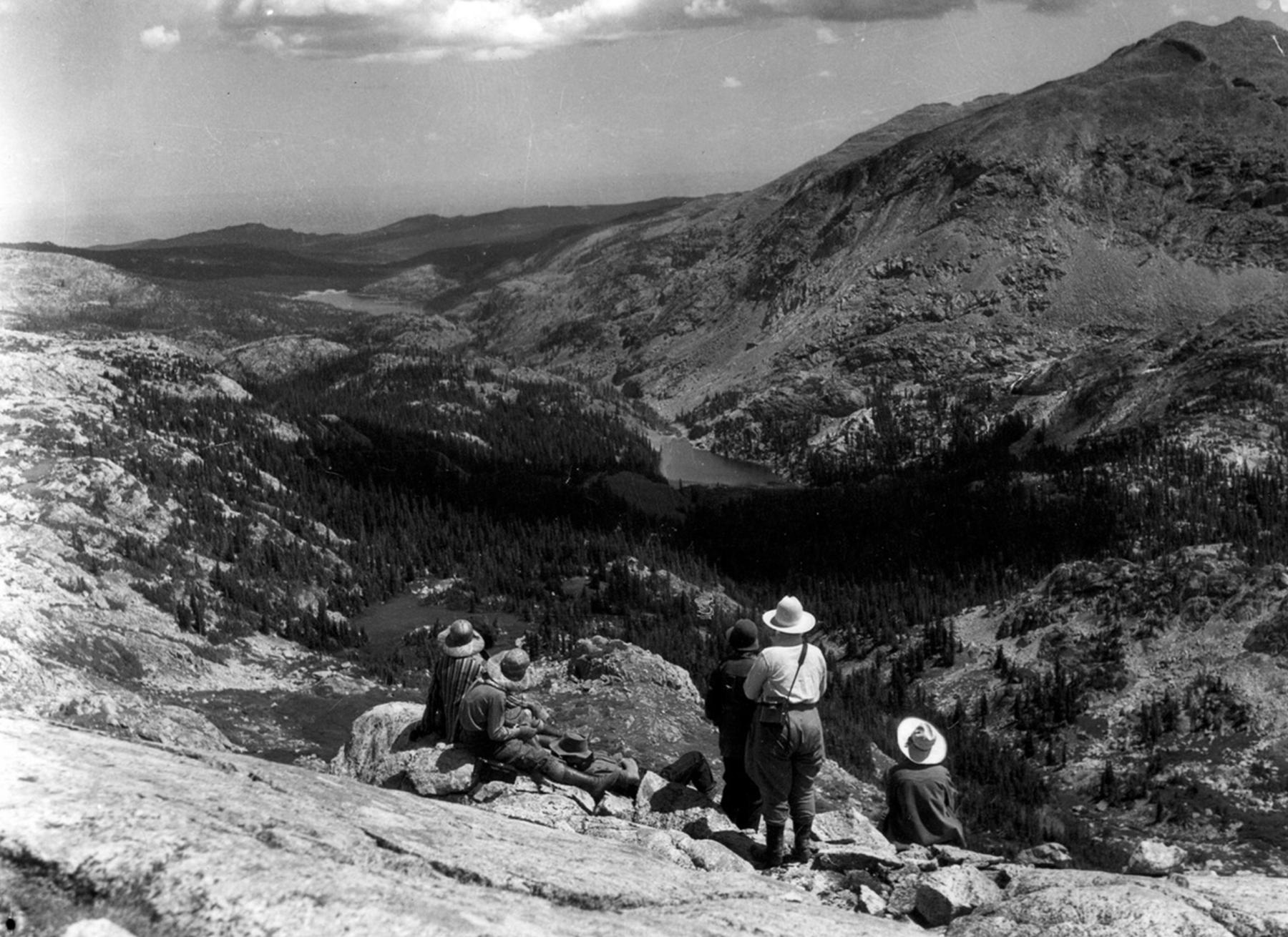
Natural resources: conserve or preserve?
Historians often look at 20th century environmental politics through the lens of conflicting attitudes toward nature: Should we conserve resources for sustainable long-term human use, or preserve large tracts of nature relatively untouched by (non-Indigenous) humans? This conflict famously played out over damming the Hetch Hetchy valley inside California’s Yosemite National Park in 1913. Conservationists such as US Forest Service founder Gifford Pinchot argued for dams’ benefits, such as drinking water for residents of San Francisco. Preservationists such as author and Sierra Club founder John Muir countered that the timeless spiritual benefits of a beautiful valley inside a national park had a greater, if hard-to-measure, value.
A similar debate played out in Wyoming in the late 1940s. The Bureau of Reclamation proposed building a dam at Lake Solitude in the Bighorns. It would provide irrigation water for 6900 acres in the Hyattville/Manderson area of Big Horn County.
Opponents, led by Dr. William F. Schunk (1896–1982) of Sheridan, argued that Lake Solitude was in an especially scenic mountain valley directly under Cloud Peak. “The paramount experiences of my life have been pack trips to Lake Solitude,” Schunk wrote. He called the lake—one mile long, one-third of a mile wide, at elevation 9500 feet, “one of the most beautiful spots in America.”
François Matthes (1874–1948), the United States Geological Survey mapmaker who had named Lake Solitude in 1899, agreed. “Lake Solitude is one of the most beautiful mountain lakes in existence,” he told Zahniser. “When I beheld that lovely tranquil lake on Paint Rock Creek, I broke my vow to abstain from naming any feature of the country, and I named it Lake Solitude.”
Origins of the irrigation proposal
In 1907, residents of the Paint Rock valley near Hyattville began the first investigations into area dams. They understood that water was the greatest limiting factor to Wyoming’s development. Water needed to be conserved: used and exploited intelligently, to promote agriculture and long-term economic growth.
Some ranches, such as that of the family of Asa Shinn Mercer, could irrigate about 4600 acres of land—but only during spring runoff. In July and August, the creeks would run dry. They tried over-soaking the land in June, but it didn’t retain water; instead fertility washed away. As a result, they could never put up enough hay and other forage to feed their cattle through the winter. Other ranches, in two areas of the lower Nowood River valley between Bonanza and Manderson, lacked the water rights and pumping stations to successfully irrigate another 2300 acres.
“The lands are rich, the crops certain, and the yields large. But the key to the situation is water. Nothing can be done without irrigation,” Mercer wrote.
By the late 1930s, Bureau of Reclamation surveys demonstrated that the best place for a reservoir would be Lake Solitude, near the Paint Rock headwaters. A dam 70 feet high and 565 feet long could hold spring runoff for release in late summer when farmers and ranchers needed it downstream. In the 1944 Flood Control Act, known as the Pick-Sloan Plan, Congress authorized the bureau to build the dam as part of the broader Missouri Basin Project.
In the Paint Rock Valley, 40 landowners formed an irrigation district to receive the water. An additional 17 owners in the Nowood areas were not yet formally organized because the pumping stations would be part of a later phase of development. (The pumping stations would require electric power, which would not be available until the completion of the Boysen Dam.) The bureau performed engineering studies and planned a 16-mile road to the dam site.
The Bureau was then at the height of its powers, transforming valleys across the West. The project’s success seemed assured.
Zahniser and the Wilderness Society
In 1947, Schunk wrote to an organization called the Wilderness Society. Then just 12 years old, the society had been organized as an insider-D.C. group opposed to road construction on federal lands. Its chief founder, Bob Marshall, was an independently wealthy forestry executive famous for summitting Adirondack peaks. Its sole employee, Robert Sterling Yard, had previously worked as a publicist for the National Park Service. They and their colleagues—foresters, planners, lawyers and professors—used their connections to influence policy.
But Marshall suddenly died in 1939, at age 38. Yard, then nearly 80, slowly declined in health and vigor. When he died in 1945, the society’s desperate leaders scrambled to hire a new executive secretary. Their best candidate was more of an editor and administrator than an outdoorsman.
Howard Zahniser was the son of a Free Methodist minister from western Pennsylvania. He’d been working as a writer and editor for government agencies. He was bald, slightly built, and bespectacled. His right leg was scarred and weak from a bone infection from his teen years. He loved John Muir’s books, but they inspired him to be a spiritual seeker rather than an outdoor adventurer.
“Zahnie” understood that his new job required outdoor work. His first summer, 1946, he took his first backpacking trip, in the Adirondacks with an activist seeking to stop a dam that would have flooded one of Bob Marshall’s favorite wilderness valleys. In 1947, Zahnie took his wife and four children to spend the summer at the Jackson Hole ranch of his boss, Wilderness Society president Olaus Murie. In August, Zahnie and his oldest son, 9-year-old Matthias, ventured halfway across the state to meet the Schunk family.
Nourishment and tonic
Will and Edna Schunk owned a cabin on Ranger Creek along the Red Grade road, near the Big Goose ranger station and Spear-o-Wigwam dude ranch. Its main building was a classic log cabin, with outbuildings including an icehouse, Finnish sauna and powerhouse with a water wheel. To the south, creeks rose to Cloud Peak and the crest of the Bighorns. The Schunks had purchased the lodge in 1933, and it remains in the family today.
Image
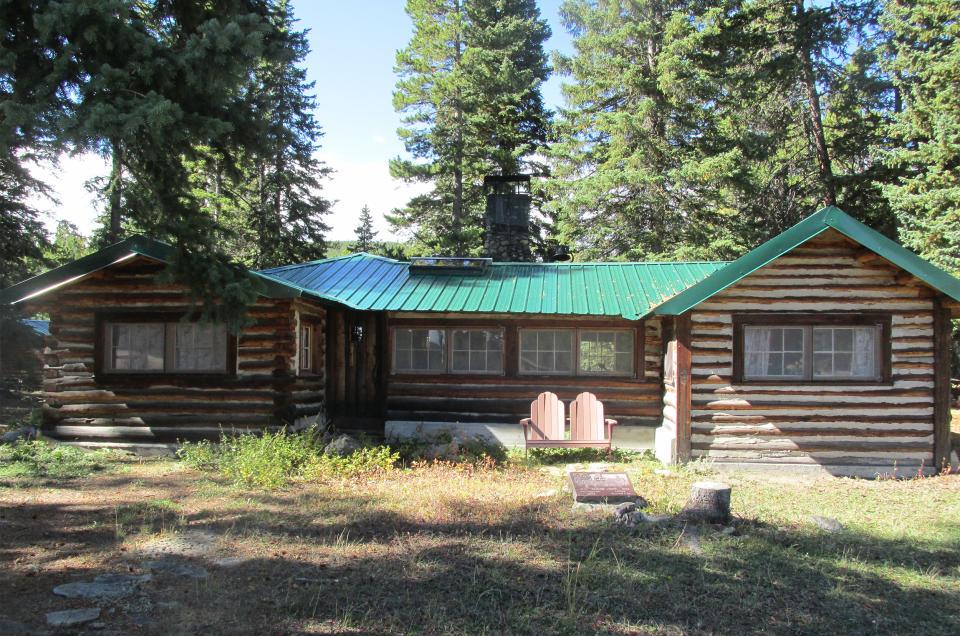
The Schunks regularly took horses up the east fork of Big Goose Creek and over the crest of the Bighorns at Geneva Pass. “Between 1933 and 1948, Dr. Will had visited Lake Solitude in the Cloud Peak area 42 times, each time with neighbors, friends, family, medical associates, journalists, artists, photographers, and wilderness preservationists from the East Coast to West Coast,” their granddaughters later wrote. Zahnie and Matthias joined such a ten-day horsepacking trip in 1947.
They experienced near-daily rain and hail storms, “though only once at mealtime,” Zahnie noted optimistically. It took two days to get to Lake Solitude, but along the way Zahnie “was exhilarated by the grandeur and wildness of the country we had seen, the view of Cloud Peak and its surrounding mountain carvings.” Then they spent four nights “intimately near the quiet lake.”
They day-hiked, swam and observed deer and other creatures. Matthias and other boys fished. Zahnie took notes incessantly, and also found time to read Dante’s Purgatory. The whole group talked around a campfire about the Bighorns, wilderness and threats.
Since 1932, the lake had been part of the 92,000-acre Cloud Peak Primitive Area. That designation was the Forest Service’s way of honoring undeveloped or roadless conditions. The first such set-aside had been preserved by ecologist Aldo Leopold—later a Wilderness Society co-founder—in New Mexico’s Gila Mountains in 1924.
A Primitive Area was merely an administrative classification, with no permanence. Just before Bob Marshall’s death in 1939, he led an effort to strengthen the agency’s regulations governing such areas’ use, and renamed them “wilderness areas.” But a 1940 Forest Service proposal to enlarge and reclassify the Cloud Peak Primitive Area to the Cloud Peak Wilderness somehow never got approved, so by 1948 it generally retained the Primitive Area name.
Zahniser found the trip glorious. “The wilderness had surely been both nourishment and tonic,” he wrote. He wished everybody could have such opportunities. He believed they would gain spiritually. He thus wanted to stop the dam. “Who that had once known the serenity of Lake Solitude would ever willingly sacrifice its tranquility or alter its aspect of beauty?”
Image
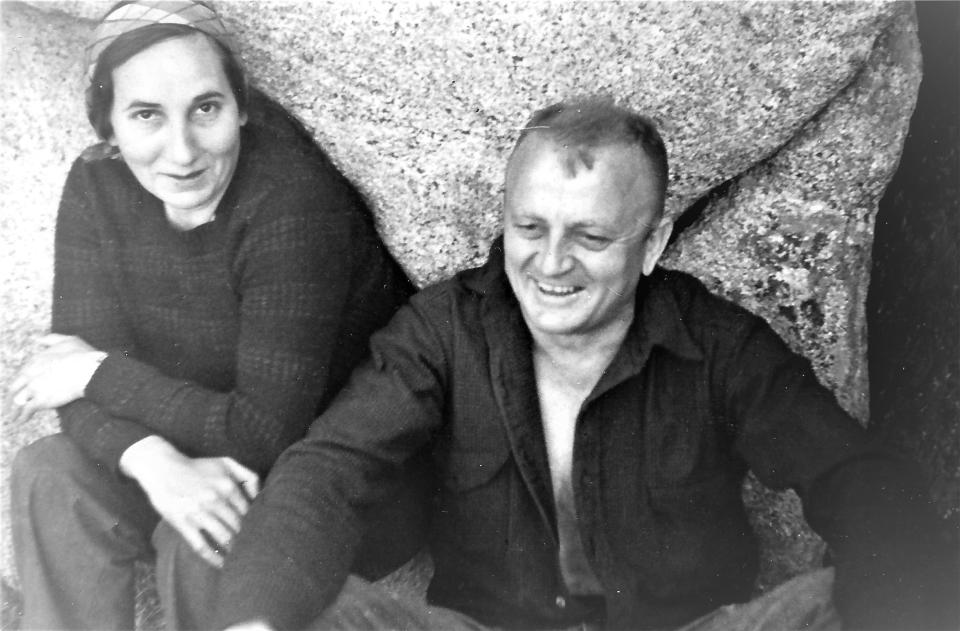
At the conclusion of the trip, Zahnie wrote in the Schunks’ guestbook that the experience “makes one feel grand and humble both. . . . It was a rare privilege to live for a time in such an environment and with such a group of people. . . . I trust that I can handle well this investment that the Schunks have made in me and in what I represent. Personally I have a gratitude that I can hardly express, for the kindness not only to me but to Matthias too.”
Engineering a political movement
That fall, Zahniser got to work. He was a long-time Washington resident who knew many people in the still-small federal bureaucracy. Always deferential and unassuming, he was also patient and relentless. He understood the political and bureaucratic dynamics: Congress had approved the project but not yet appropriated funds. The Bureau had negotiated a 1941 agreement to withdraw Lake Solitude from the Primitive Area for reclamation purposes, but the Forest Service wasn’t too happy about it. You can picture Zahniser making a case to anyone who would listen: How about at least holding a public hearing to learn more?
For example, in an Oct. 29, 1947 letter to Agriculture Secretary Clinton P. Anderson, Zahniser urged Anderson, who oversaw the Forest Service, to stand up to the Interior Department, which oversaw the dam-building Bureau of Reclamation. Commending a speech Anderson had given, Zahniser noted that it had referred to “the magnitude of the proposed reclamation projects.” Zahniser continued, “There are developing in some instances conflicts between dam construction and wilderness preservation. There is such a conflict threatened with reference to Lake Solitude in the Cloud Peak Primitive Area of the Bighorn National Forest in Wyoming. There is another threatened conflict on Sun River headwaters in the Bob Marshall Wilderness Area of the Lewis and Clark National Forest in Montana.” Zahniser suggested that Anderson remind dam-builders, as he had in his speech, of “the watershed-protection values of the forest.”
In more such letters and conversations, Zahniser pushed for reconsideration of the Lake Solitude dam, or at least some sort of public hearing. In December, Zahniser wired Olaus Murie that he had succeeded: The Bureau of Reclamation would hold a hearing.
When Murie opened the telegram, “I experienced one of those moments of elation,” he wrote back to Zahniser. “This has renewed my own faith and strength.”
Murie had not expected Zahniser to win this battle. “The cause seemed lost… I confess here and now that I did not dare to hope that we would get this opportunity.” At a public hearing, Murie could rally Western allies to testify. The hearing—and the political organizing that the Wilderness Society could do around it—would generate momentum to stop the dam. After commending Zahniser’s work Murie quickly contacted Schunk, as well as dude ranchers Charley Moore near Dubois, Wyoming and Struthers Burt of Jackson Hole.
Image
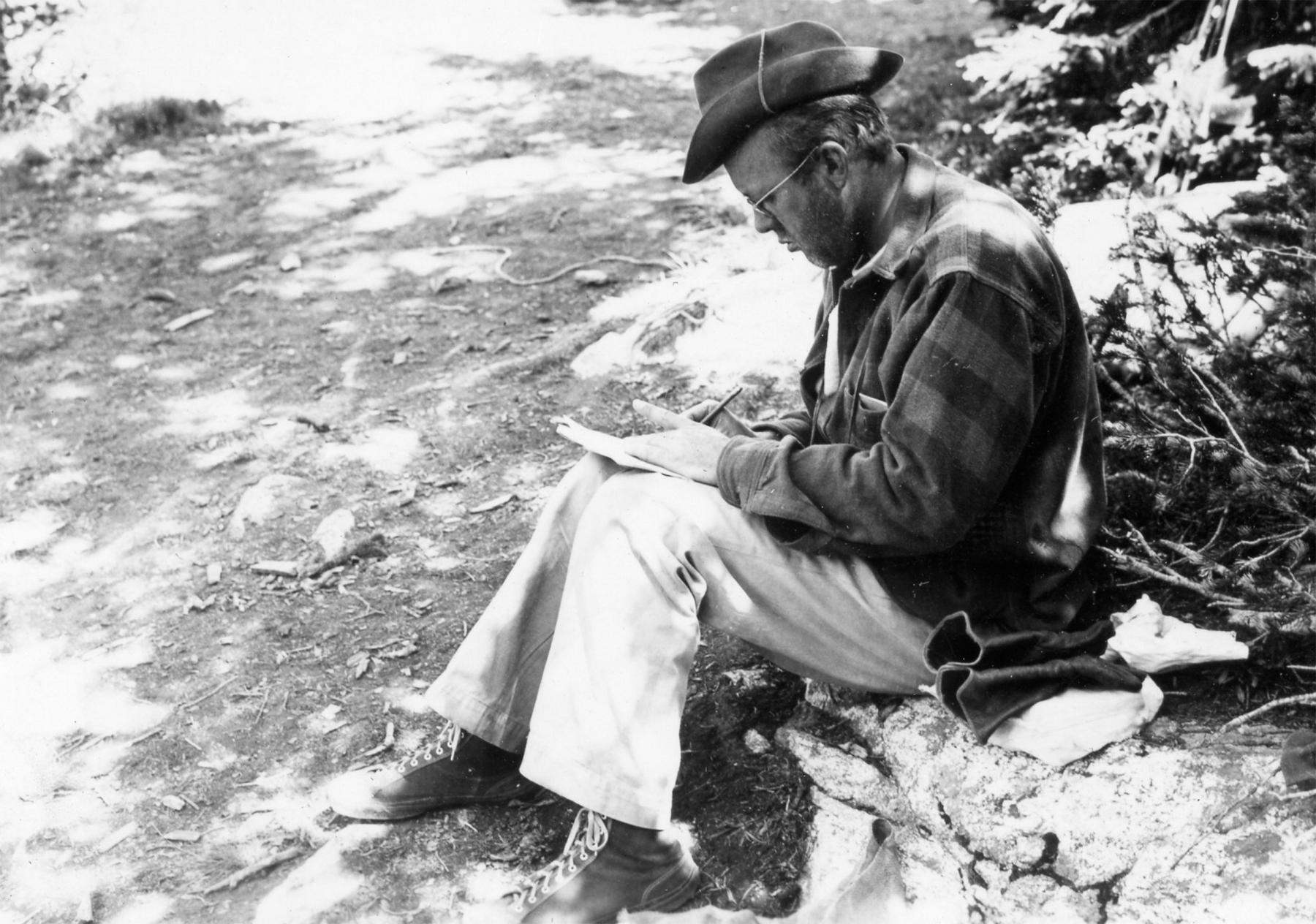
Sheridan’s opposition
The first of two hearings commenced at the Sheridan County Courthouse at 10:00 a.m. on Feb. 2, 1948. Presiding was Ralph Workinger of Cody, a Bureau of Reclamation employee. Engineers and other federal experts flanked him. He stated that the hearing’s purpose was “to develop . . . the facts” that concerned citizens wanted the Bureau to consider. The morning session was dedicated to testimony by the Bureau’s experts and other government agencies, as well as to questions. In the afternoon and evening—they did not adjourn until 10:30 p.m.—citizens could speak for up to 15 minutes apiece. Several also brought resolutions passed by civic organizations, which were entered into the record.
The crowd numbered more than 100. A majority were Sheridan locals opposed to the dam. Many, like the Schunks, visited Lake Solitude on vacation and appreciated its scenic beauty. As Schunk testified, “A dam-site at the lake will destroy the major objective of pack trips on both sides of the mountains. Pack trips for camping, fishing, for scenery and for aesthetic advantages are vital to our American way of living.”
The Sheridan Chamber of Commerce—spurred by local dude ranchers who made money by escorting guests to Lake Solitude—had organized a widespread and disciplined campaign. It had arranged for resolutions against the dam from dozens of civic organizations, including Lions, Eagles, Kiwanis, and the Business and Professional Women’s Club. It also had out-of-town backers, including Olaus Murie from Jackson; Walter Nye, a Billings, Montana–based employee of the Dude Ranchers Association; and William Voigt, jr., a Denver-based employee of the Izaak Walton League, a sportsmen’s conservation group.
Dam opponents said they had nothing against irrigation. “We are in full accord with the development of ranching and farming. Some of our members are ranchers,” Murie testified. But “in some instances, the modification of land features to produce irrigation does irreparable harm to other land values, and seriously injures the interests of other people.” Specifically, they wanted to save Lake Solitude. They insisted, without evidence, that other less scenic dam sites must be available.
Plenty of surveys suggested otherwise. Indeed, Lawrence Bishop, the state engineer and a dam proponent, had worked on the first such survey back in 1907. There were other potential dam sites, he and other engineers acknowledged—but their costs would be four to five times that of Lake Solitude.
Costs and benefits
Many of the dam opponents’ best arguments centered on high costs. The project would cost $1.5 million (more than $19 million in 2024 dollars). Of that total, $710,000 was for the road and dam, with the remainder for the pumping stations in the second phase. Voigt of the Izaak Walton League noted that when Pick-Sloan had been approved, in 1944, the estimate had been $370,000. He noted that the Colorado–Big Thompson project, once estimated at $40 million, had ballooned to $128 million. Who, he asked, would pay for any cost overruns?
Clearly the irrigators would not be liable. Voigt calculated that to recoup the dam’s cost at current estimates, farmers would have to pay $200 per acre, when the most optimistic estimate of how much more money they could make on irrigated land was $50 per acre. From a business perspective, the project simply didn’t make sense. Others disputed Voigt’s math, but the argument was muddied by three complications.
First, the Bureau was unwilling to be more specific on its cost estimates, because that would hamper the competitive bidding process once the project was approved. So it was hard to tell if or how the road, for example, might cost more than expected. Second, Pick-Sloan decreed that if Wyoming didn’t “use” (in other words, dam) all of its water, downstream states could use it instead. Thus to dam proponents, the cost of a dam was less important than the waste of giving away that water to rival, downstream states. Third, Pick-Sloan explicitly stated that costs and benefits should be measured across the entire Missouri Basin project, not for each dam or each irrigator. Costs would only be recouped from irrigators based on their—the land’s—ability to repay. Revenues from other project components, such as South Dakota power plants, could make up the difference.
Dude rancher Charley Moore imagined a potential irrigator going to a bank with the facts the Bureau had presented. “‘Mr. Banker, I want to borrow a million and a half dollars on this. I don’t know how much I am going to take in. I don’t know how much I am going to pay you back. I don’t know when I’ll pay it back, but in the years to come, I will pay it back according to my ability to pay.’ Would I get the money?”
Meanwhile, however, the dam’s opponents were encouraging the Bureau to consider the more expensive alternate sites. They were using every argument they could find.
Other arguments against the dam
For example, opponents noted that two Paint Rock families owned about 2000 acres of the benefiting properties. The law said that each owner could irrigate only 160 acres, and everyone understood that irrigators would likely figure out how to configure property lines to meet the letter of the law. But the spirit of the law was ideally for irrigation projects to open never-farmed federal land to new homesteaders such as military veterans. By contrast, this project was designed solely to subsidize fewer than 50 existing landowners.
Furthermore, Voigt said, “We are speaking in terms of precedent, the entering of wilderness.” A.B. “Buck” Ewing of Sheridan added, “If this project goes through, it will set a precedent for the use of all lakes in the Big Horn area, and the Secretary of the Interior can decree to abolish all wilderness areas by the stroke of a pen.”
This would be the first dam constructed inside a Forest Service Primitive Area. The concept of inviolable wilderness was by no means the dam opponents’ lead argument, but it was there. It soon became one of Zahniser’s biggest concerns: What good does it do to designate wilderness areas if they can be so easily reclassified?
It was an important question because the qualities of wilderness were so rare. As Sheridan-area rancher Waldo Forbes testified, “No man has in his power or ability to build or create something like Lake Solitude. However, we do have it in our power to preserve and save Lake Solitude. It should be done.”
East versus West
Two days later, another hearing took place in Basin, the Big Horn County seat on the west side of the mountains. The room was less crowded, and the audience was much more dam-friendly. Voigt and Murie did not attend. But some dam opponents did, just as some dam proponents had traveled to Sheridan.
The divide was hardly unanimous. About 23 Manderson-area residents had signed a letter opposed to the dam. One Hyattville woman claimed, improbably, that “only one-fifth or less of the people here on the Paint Rock are in favor of a dam at Solitude.” Meanwhile, D. Orrel Geier of Johnson County (east of the mountains) had testified in Sheridan in favor of the dam, also filing resolutions from six Johnson and Sheridan county organizations that backed his views. Nevertheless, the two hearings were like a home-and-home series in professional sports, playing to appreciative audiences, with some of the stars refining their strategies for Game Two.
Dam proponents were increasingly frustrated, even angry. George Muirhead, a Worland banker, testified that “Our irrigation development of this Bighorn basin is being threatened by what, shall we say, well, Eastern aristocratic interests—that is what actually the Dude people are … It is Dudes versus Wyoming development.”
Muirhead had left Scotland in 1906 because it was too aristocratic, without enough opportunity for poor people to better themselves. Now he saw the same dynamics in his new home. Though he cited little evidence for his theory, the backgrounds of some of the dams’ most vocal opponents supported it: Rancher-lawyer William Henry Harrison III was the grandson and great-great-grandson of presidents (and later a U.S. congressman). Rancher Waldo Forbes was a descendant of philosopher Ralph Waldo Emerson. James Munro, Charley Moore and William Redle had attended Yale, Michigan and Creighton law schools, respectively.
Meanwhile, Hyattville farmer-rancher Clarke Gapen pointed out Sheridan’s hypocrisy: The Red Grade road penetrated the Bighorns from the Sheridan side, complete with a water tower at Twin Lakes. “Now they are crying their eyes out, tears as big as balls, that we want a road to the lake on our side.”
At the Sheridan hearing, Gapen had used a similar tone in speaking directly to his opponents. “You are not man enough to come out and fight yourself, you have to go and get outside interests like the Izaak Walton League… You have men that make their living in Colorado come up here and tell us how to run our state.”
Ralph Mercer, president of the Paintrock Irrigation District and a fine orator, had told dam opponents at Sheridan that of the “hundreds of thousands of acres of playgrounds that you enjoy and that I enjoy, that you seem to want to restrict to a few of your wealthy friends: we are not going to cart it off. It [the landscape] is going to be just where it is.”
In Basin, Mercer and others again highlighted how Lake Solitude would not be destroyed, simply altered. Furthermore, the road would allow access by people who couldn’t afford lengthy pack trips or outfitters. They believed recreational value would be enhanced. But, Mercer charged, dam opponents favored dude ranching over agriculture, and even seemed proud to do so. “Sheridan is the only town in the state that wantonly and deliberately opposed the progress of its neighbors in their desire for water, which is vital to their welfare.”
The search for facts
Dam proponents had insightfully interpreted the political dynamics at work. They saw the battle as agriculture versus dude ranching, development versus recreation, Big Horn County versus Sheridan County, the Bighorns’ western slopes versus its eastern slopes, the West as a region and culture versus the East, the little guy versus the aristocracy.
Image
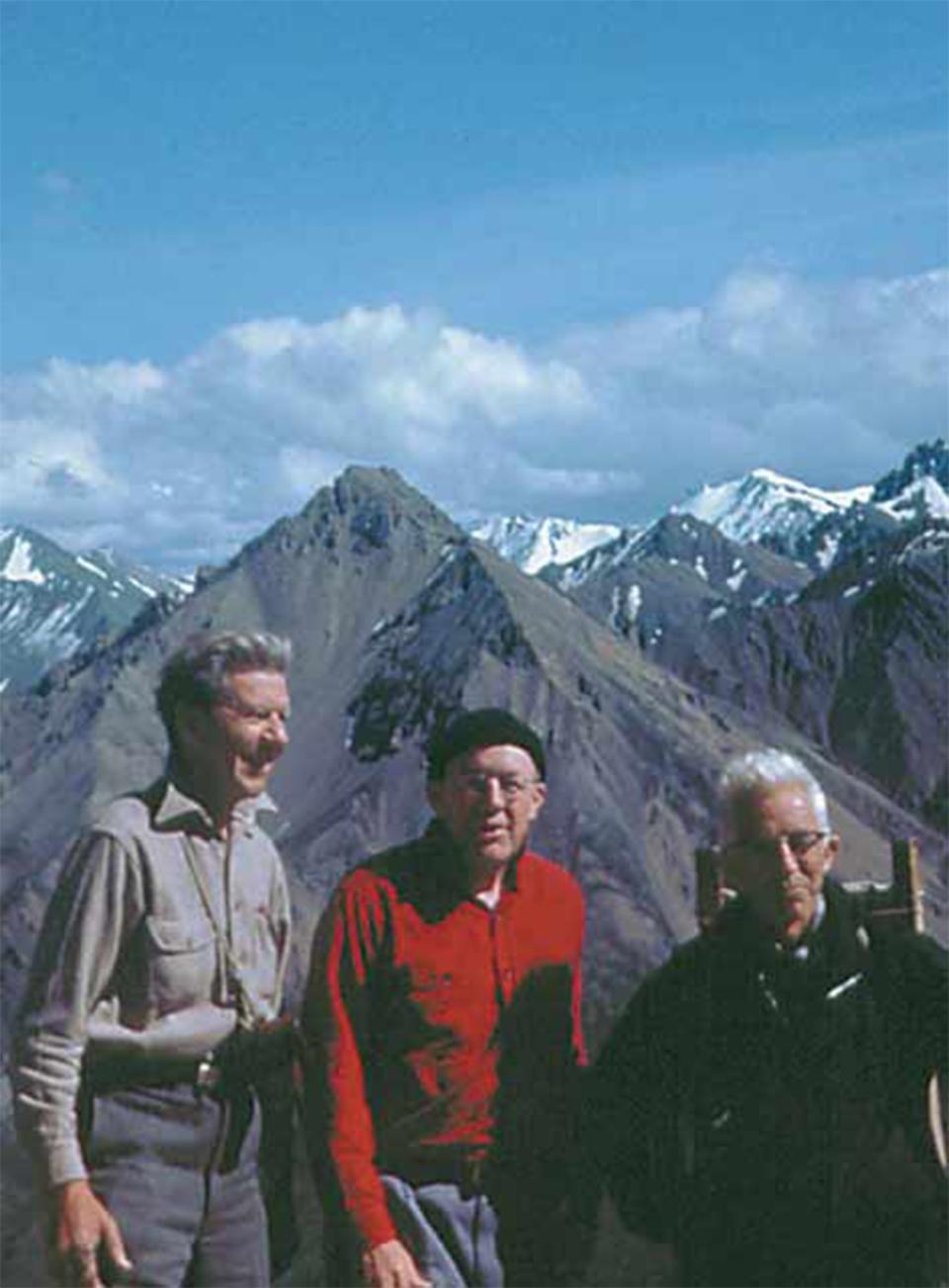
But the hearings’ stated purpose had been not to explore political dynamics, but to find facts that could inform this project. As the hearings dragged on, presiding officer Workinger increasingly urged citizens to provide facts—for example, about alternative reservoir sites the Bureau might somehow have overlooked, or about ways to measure the economic value of recreational activities at Lake Solitude.
These facts would help in the next two phases of the project. First, the Bureau would make “administrative considerations,” Workinger said. Then, Congress would appropriate funds for the project.
But the testimonies contained few such facts. Indeed, dam opponents vigorously resisted the idea that the spiritual benefits of wilderness could ever be assigned a dollar value.
Arguably, the biggest fact to arise from the hearings was that dam opponents could muster significant political pressure. If they could get 100 people to show up to a daylong meeting in Sheridan, how else might they make the Bureau’s job more difficult? Zahniser had been correct: Getting a hearing had been the key political strategy to stop the dam. Like all bureaucrats, the bureau’s leaders were afraid of political pressure. Within a year, its administrators quietly removed the Paintrock project from their plans.
A prudent decision
In retrospect, it’s telling and sad that neither side of the debate mentioned the Crow or Shoshone tribes, which had been living in and managing these landscapes for millennia. The hearings featured no people of color and just two women, both of whom used their husband’s name (“Mrs. Earl Davis” and “Mrs. Thomas Stevie”). And it’s frustrating that the system had set up a straight yes-or-no debate. Delbert Pape, a retired coal operator from Sheridan, wanted to preserve Lake Solitude but begged the hearing’s attendees to keep talking and find a compromise.
But—as dam proponents saw—such compromises are easier to accomplish in a smaller geography, without “interference” from elsewhere. Here, the nationwide voices against the dam reflected nationwide interest in preserving natural beauties. In 1948 if not in previous years, a project that would use subsidies from national taxpayers to alter these beauties was not going to get much support.
Lake Solitude was indeed a special place, and such places were increasingly endangered. A diverse group of Americans had a deep desire to preserve such places. Zahniser, Schunk and their allies may have surprised the dam proponents with an ability to tap into that desire and use it for political purposes. But they weren’t wrong.
The Wilderness Society learns and grows
After the hearings, Zahniser played up the Lake Solitude fight. The spring issue of the organization’s newsletter, The Living Wilderness, featured anti-dam articles by Murie, Voigt and Schunk. A previous issue had featured Zahniser’s eloquent, detailed chronicle of his pack trip.
In Murie’s article, he recounted a story told by D.O. Geier, the dam proponent from Johnson County. Geier recalled sitting “on the banks of the ditch on my ranch with my feet in the irrigation ditch with my boots, and tired, and I have looked down across my fields… I thought of the prosperity that that valley represented, and the beauty, if you please, the beauty.” Murie said he was moved. But, Murie countered, “It is not only the shopworn people of the great cities who seek the inspiration of the roadless mountains.” It was also “people like you,” “fellow witnesses who work with the soil.”
That respect for the other side of the argument, but a calm insistence on the spiritual values of undeveloped places, would characterize the Wilderness Society’s arguments for the rest of Zahniser’s and Murie’s lives.
So would collaboration with other organizations. In the same way that Voigt of the Izaak Walton League took the lead in questioning the Bureau’s math at Lake Solitude, in 1954 David Brower of the Sierra Club questioned the math of its Echo Park dam proposal on the Green River inside Dinosaur National Monument. In the background, Zahniser was coordinating these arguments—more interested in results than credit.
The same summer that Zahnie first visited Lake Solitude, the Wilderness Society council (board of directors) proposed a national wilderness system. If the organization could proactively identify places deserving preservation, and make these inviolable, it wouldn’t always have to be on the defensive, fighting a dam, ski area or road.
That path eventually led to the 1964 Wilderness Act. Zahniser first drafted the bill in 1956, after stopping the Echo Park dam. As Zahniser coordinated with other groups, repeatedly testified in Congress and rewrote the bill 65 times, he also continually returned with the Schunks to Lake Solitude. In 1955, he brought his whole family. In 1957, he arranged for the Wilderness Society Council—its board of directors—to meet in Sheridan, followed by a Schunk-led pack trip to the lake. Edna Schunk wrote, “I know it was a great privilege for us when Zahniser asked if the National Council Meeting could be held here, and for it to have become reality has exceeded all of our wide experiences.”
Image
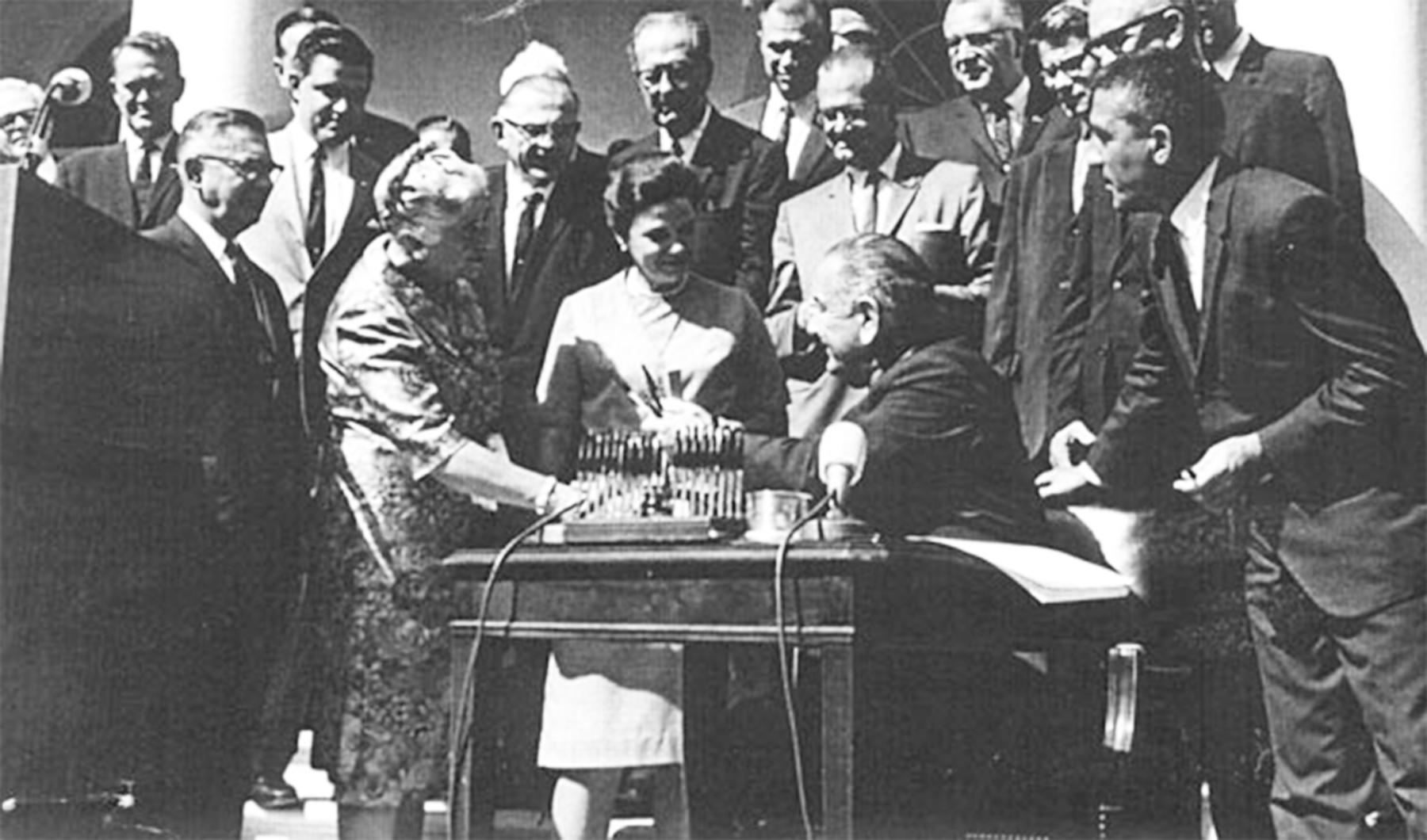
A wilderness, a new dam site, and a legacy
Will and Edna Schunk, as well as their son Edward and his wife Rosemary, continued their vigorous support of Zahniser’s wilderness efforts. Eventually, in September 1964, the bill overwhelmingly passed through Congress. In 1984, Lake Solitude was formally preserved as part of the 189,039-acre Cloud Peak Wilderness Area.
In recent years, the Wyoming Water Development Office has proposed an earthen dam 100 feet high and 2500 feet long on Alkali Creek, an intermittent stream three miles northwest of Hyattville. A 294-acre reservoir would be filled in part by water carried from Paint Rock Creek through ditches on the Mercer ranch, which is still in the family.
The result would alleviate late-season water shortages on more than 10,000 currently irrigated acres in the Paint Rock and Nowood valleys. The Water Development Office has received all necessary approvals. But since 2015, cost estimates have ballooned from $35 million to $113 million. The legislature has not yet appropriated funds, and in May 2024 the speaker of the Wyoming House said rising costs render the project “close to not making sense.”
In 1964, Howard Zahniser was increasingly sickly and aware that he was working too hard. He died in May, a few months before the triumph of his wilderness crusade. In memoriam, the Living Wilderness opened with excerpts from one of his most famous essays. He described awakening in his tent one Sunday morning “to a world of wilderness so bright, so lovely, so peaceful… The air was still. The lake was smooth… As I lay there, inspired to worship, the words from some psalm came to my mind: ‘Great peace have they which love thy law.’ It came to me—a thought—that the peace of the wilderness is indeed a peace of orderliness, of law.”
The essay’s title: “Lake Solitude Sermon.”
[Editor’s note: Special thanks to the Wyoming Cultural Trust Fund, support from which in part made publication of this article possible.]
Resources
Primary Sources
- “Forester, engineer give views on proposed project.” Billings Gazette, Feb. 3, 1948, 6.
- Izaak Walton League of America. “Leave Lake Solitude Alone!” (Chicago, 1948).
- Murie, Olaus. “A primitive area on trial.” The Living Wilderness (Spring 1948).
- Olaus Murie to Howard Zahniser, Dec. 15, 1947. Aldo Leopold papers, 9/25/10-2, Organizations, Committees, accessed May 27, 2024 at https://search.library.wisc.edu/digital/AEF3LOH6K3J4BM8S/pages/ANJAURC4XVFJNV8X.
- Schunk, William F. “Lake Solitude described.” The Living Wilderness (Spring 1948).
- United States Bureau of Reclamation. “USDI Bureau of Reclamation Public Hearing at Basin, Wyoming, Feb. 4, 1948 concerning Paintrock Unit and construction of a dam at Lake Solitude,” Bureau of Reclamation, 1948, accessed July 5, 2024 at https://park.wyldcatalog.org/Record/a1105662.
- United States Bureau of Reclamation. “USDI Bureau of Reclamation, Transcript of Public hearing, Missouri Basin project, Wyoming Paintrock Unit, Sheridan County Courthouse, 1948.” Bureau of Reclamation, 1948, accessed July 5, 2024 at https://park.wyldcatalog.org/Record/a110565.
- Voigt, William Jr. “Chiefly reportorial.” The Living Wilderness (Spring 1948).
- Wilderness Society Records. CONS130, Conservation Collection, The Denver Public Library. This archive includes Zahniser’s letters to William Schunk and Clinton Anderson.
- Zahniser Ed, ed. Where Wilderness Preservation Began: Adirondack Writings of Howard Zahniser. Utica, NewYork: North Country Books, 1992.
- Zahniser, Howard. “Cloud Peak’s Primitive Area and People.” The Living Wilderness (Autumn 1947).
- ______________. “Lake Solitude Sermon.” The Living Wilderness (Winter-Spring 1964).
Secondary Sources
- Harter, Lori, and Kathleen F. Ahrens. The Story of Schunk Lodge. (privately published, 2018).
- Harvey, Mark. Wilderness Forever: Howard Zahniser and the Path to the Wilderness Act. Seattle: University of Washington Press, 2005.
- Moore, AnneMarie Lankard. “Robert Marshall, Howard Zahniser, and the Wilderness Society: A Life History Study of Agency and Structure in U.S. Wilderness Conservation.” Ph.D. diss., University of Idaho, 2004.
- Roth, Dennis. “The National Forests and the Campaign for Wilderness.” Journal of Forest History 28, no. 3 (1984): 112-125.
- Stark, Peter L. Names, Boundaries, and Maps: A Resource for the Historical Geography of the National Forest System of the United States: The Rocky Mountain Region (Region 2). National Museum of Forest Service History 2019, accessed July 6, 2024 at https://forestservicemuseum.org/wp-content/uploads/2020/02/Rocky-Mountain-Region-Feb25-2020.pdf.
- SWCA Environmental Consultants, “From Mammoths to Mercers: A History of the Nowood River Watershed, Wyoming,” Wyoming BLM, Feb. 8, 2022, accessed July 6, 2024 at https://storymaps.arcgis.com/stories/97560cfddccb4c0388102c539682648f.
- Thuermer, Angus M. Jr. “$72 million in dam projects advance,” WyoFile, Aug. 25, 2015, accessed July 6, 2024 at https://wyofile.com/70-million-in-dam-projects-advance/.
- __________________. “Hyattville dam cost jumps 69% to $59M,” WyoFile, Feb. 11, 2020, accessed July 6, 2024 at https://wyofile.com/hyattville-dam-cost-jumps-69-to-59m/.
- __________________. “Proposed Alkali Dam has doubled to $70M.” WyoFile, Sept. 7, 2022, accessed June 10, 2024 at https://wyofile.com/cost-of-proposed-alkali-dam-has-doubled-to-70m/.
- __________________. “Lawmaker: Northern Wyoming dam cost ‘close to not making sense’,” WyoFile, July 5, 2024, https://wyofile.com/lawmaker-northern-wyoming-dam-cost-close-to-not-mak…, accessed July 11, 2024.
- United States Department of the Interior, Geological Survey. Frank A. Swenson and W. Kenneth Bach. “Ground-Water Resources of the Paintrock Irrigation Project, Wyoming.” Geological Survey Circular 96 May 1951, accessed July 6, 2024 at https://pubs.usgs.gov/circ/1951/0096/report.pdf.
- United States Department of the Interior, National Park Service, Historic Places Registration Form: Schunk Lodge, Jan. 4, 2018, accessed July 6, 2024 at https://npgallery.nps.gov/GetAsset/5cf89965-7164-4d07-a210-a16409067890.
- United States Senate Committee on Interior and Insular Affairs.“National Wilderness Preservation Act: Hearings Before the Committee on Interior and Insular Affairs, United States Senate, Eighty-fifth Congress, First Session, on S. 1176, a Bill to Establish on Public Lands of the United States a National Wilderness Preservation System for the Good, Vol. 1 Washington, D.C.: United States Government Printing Office, 1957, 175, accessed July 10, 2024 at https://books.google.com/books?id=LS6kbC9uuKAC&q=lake+solitude#v=snippet&q=%22matthes%22&f=false.
Illustrations
- The illustrations of Schunk Lodge, Edna and William Schunk, and Howard Zahniser taking notes are from the Schunk family collection, courtesy of Kathy Ahrens. Used with permission and thanks.
- The photo of Alice Zahniser and Mardy Muire at the signing of the in 1964 Wilderness Act signing photo is from the Murie Center in Jackson Hole. Used with permission and thanks.
- The 1930s Elsa Spear Byron photo looking down Paint Rock Creek with Lake Solitude in middle distance is from the Spear collections at The Wyoming Room, Sheridan County Fulmer Public Library. Used with permission and thanks.
